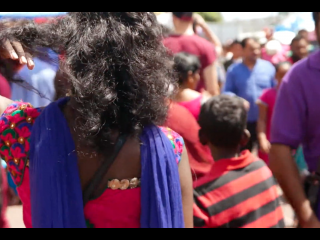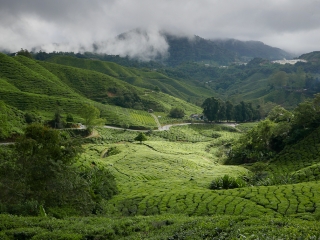For my first full days as inglorious traveler, I explore the different facets of Kuala Lumpur. I join an unofficial city tour led by a friend of the hostel, M. from Iran, a student in Kuala Lumpur, trying to save enough money to bike across India and Pakistan. He takes us to Indian and Chinese temples, museums and mosques, cheap eateries, and the religious bazaar that is Batu Caves—all in all a good introduction to the city’s rich tapestry. I take a trip to the Petronas Towers, persuaded by their fame, and arrive on a high-rise planet of its own, with enormous glass surfaces aiming for the sky and a long parade of shopping malls stretching at base levels. Those living in the area benefit from heavily guarded artificial parks, sanitized lakes, air conditioned walkways. A stark contrast to the more downtown part, where my hostel is located, which looks more like an improvisation in urban planning. I check out one of the malls out of curiosity and marvel at the number of tourists who equal quality time in Kuala Lumpur with shopping. Not far from this, run-down little streets claim the city back, and the same skyscrapers play hide-and-seek from behind tarp awnings and satellite dish infested roofs. My home town, Bucharest, has prepared my eyes for eclectic urban skylines, still Kuala Lumpur takes the game to another level.
While I walk between these radically different cityscapes, I try to nail down the spirit of Kuala Lumpur, but it somehow eludes me. It is obviously one of the contenders for Asian metropolis of the future, yet some of its dimensions seem left out from this ambitious plan. Outside the well developed parts, too many people live out on the street, buildings are in decay, poor hygiene looms at every corner, piles of dirt are left untouched. And the ethnic diversity (Malay, Chinese, and Indians are the dominant groups) doesn’t quite manifest itself past the surface level: observing the subway stations, the markets, the parks, and other public places, one gets the feeling the various ethnic groups have found a way to live separately together. It’s surprising that a city can hold under its umbrella such stark differences between its areas and between its peoples, and still be called one city.
M. tells us during the tour that the name Kuala Lumpur means “muddy (he refers to it as “dirty”) confluence,” since two rivers meet on its territory. Maybe Kuala Lumpur’s character lies in this capacity to force unthinkable contrasts to come together. Maybe the omnipresent and openly recognized dirt is just like a veil before the grand inauguration of a statue.
On my final night here I go back to China Town, buy rose milk in a plastic bag, and sit on a bench in a parking lot to watch the bedtime ritual of the homeless. Some are sound asleep already on their patch of cement. They face the sky with a serene expression. The only morose look is that of a temple cat–a guardian that stays awake to intimidate the strangers.










Leave a Reply